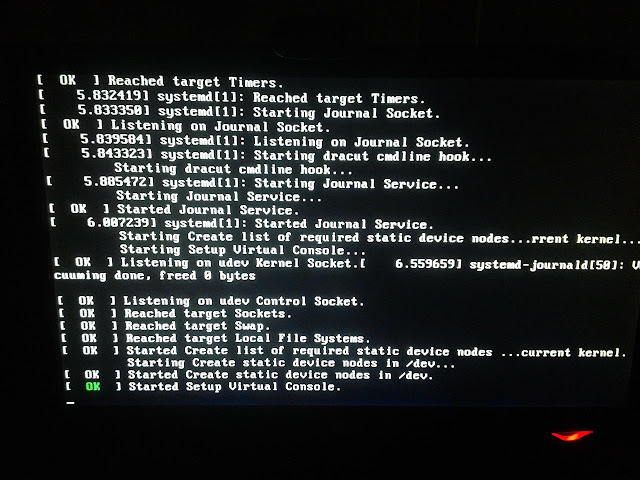Kernel Programming 101 – Creating your own Linux Kernel Module
Have you ever wanted to write your own kernel module? This multi-part blog post will talk about creating your first kernel module, using the proc file system, gathering and updating statistics and will cover topics such as your kernel as a menu items to menuconfig, setting defaults in the kernel config, registering network callbacks for specific types of packets taking Cisco CDP as an example and some tips-tricks in writing and debugging kernel code. A lot of my own learning has been through blogs and experiments. One source that is really great and does summarize a lot of what my blog will talk about and more is TLDP (The Linux Documentation Project).
Today programming involving systems is about providing the flexibility and pace for software development by providing user space APIs that interact with the linux kernel through system calls. This approach also provides the abstraction needed to carve out the complexity in direct kernel programming. So before we dive into kernel programming-101, lets answer this question - Why Kernel Programming?
When there's need to perform operations without cpu cycles wastage and/or reduce user space copy overheads, kernel programming suits the bill. Taking networking and linux networking stack as Continue reading
Featured Webinar: Leaf-and-Spine Designs
The featured webinar in March 2016 is the Leaf-and-Spine Designs update to the Leaf-and-Spine Fabrics webinar, and in the featured videos (the ones marked with a star) you'll find in-depth explanation of BGP features available in Cumulus Linux, including a cool trick that allows you to run EBGP sessions across unnumbered interfaces.
Read more ...Worth Reading: Carrier Supporting Carrier

The post Worth Reading: Carrier Supporting Carrier appeared first on 'net work.
Alpha Testing the AlphaLeon HTTP Bot
ASERT was initially alerted about an emerging threat called AlphaLeon by Deep & Dark Web intelligence provider Flashpoint in August 2015. It caught and kept our interest because it sounded like it could be a new “banker” malware family. While it took some time to find samples of the malware in the wild, this post […]Alpha Testing the AlphaLeon HTTP Bot
ASERT was initially alerted about an emerging threat called AlphaLeon by Deep & Dark Web intelligence provider Flashpoint in August 2015. It caught and kept our interest because it sounded like it could be a new “banker” malware family. While it took some time to find samples of the malware in the wild, this post […]Cheat: your portable memory bank
How often do you find yourself scratching your head, trying to remember a command that you knew by heart but just can’t remember when you need it most? It happens for me quite often. Probably because I am aging or may be there is too much stuff in my brain attic. But I found a solution […]Don’t Touch My Mustache, Aruba!

It’s been a year since Aruba Networks became Aruba, a Hewlett-Packard Enterprise Company. It’s been an interesting ride for everyone involved so far. There’s been some integration between the HPE Networking division and the Aruba teams. There’s been presentations and messaging and lots of other fun stuff. But it all really comes down to the policy of non-interference.
Don’t Tread On Me
HPE has done an admirable job of keeping their hands off of Aruba. It sounds almost comical. How many companies have acquired a new piece and then done everything possible to integrate it into their existing core business? How many products have had their identity obliterated to fit in with the existing model number structure?
Aruba isn’t just a survivor. It’s come out of the other side of this acquisition healthy and happy and with a bigger piece of the pie. Dominick Orr didn’t just get to keep his company. Instead, he got all of HPE’s networking division in the deal! That works out very well for them. It allows Aruba to help integrate the HPE networking portfolio into their existing product lines.
Aruba had a switching portfolio before the acquisition. But that was just an afterthought. It Continue reading
Your Cloud Computing Questions Answered
Brian Gracely outlines the wealth of cloud content coming up at Interop Las Vegas, and the thinking behind it.
Docker Wrapper For Ping
Ping is probably the most popular network troubleshooting and monitoring tool. It happens very often that to test reachability, we have to ping many destinations. The usual requirement is to ping something not from one, but multiple sources on internal network, and sometimes from internet. To be able to do it, we have to have accounts […]
The post Docker Wrapper For Ping appeared first on Packet Pushers.
Docker Wrapper For Ping
Ping is probably the most popular network troubleshooting and monitoring tool. It happens very often that to test reachability, we have to ping many destinations. The usual requirement is to ping something not from one, but multiple sources on internal network, and sometimes from internet. To be able to do it, we have to have accounts […]
The post Docker Wrapper For Ping appeared first on Packet Pushers.
Netflix Flies In The Clouds

Last month, the announcement was made that after seven years, Netflix completed its move to the cloud. While offering my sincere congratulations to Netflix, it begs the question what chance smaller companies have of moving successfully to the cloud.
Weaving Threads
I love it when a plan comes together; it’s great seeing multiple threads in different places intersecting, and the news from Netflix pulled together a few things from the last 12 months in a rather interesting way.
Thread #1
I first heard about the Netflix announcement by listening to the Packet Pushers Network Break
episode 74. I don’t have enough time to keep up with all the industry news direct from all the sources out there, so I try to listen to podcasts on my drive into work. Network Break is one of my favorites, with Drew Conry-Murray and guests rounding up the week’s news and sharing their opinions.
Thread #2
The Netflix announcement explained that the company migrated from a monolithic app to hundreds of micro-services.
Rewinding the clock to ONUG Spring 2015, I listened to a presentation from Battery Ventures’ Adrian Cockroft, in which he espoused the benefits of containerized micro-services. The idea is that if Continue reading
Stop Thinking About SDN!
In this episode of Network Matters with Ethan Banks, learn why Ethan's advice to most enterprises is to stop thinking about SDN. Rather than viewing SDN as a shrink-wrapped magic solution, Ethan explains why enterprises need to focus on their specific business problems and the networking products that can solve them – SDN or not.
Ethan is the co-host of the Future of Networking Summit at Interop Las Vegas. Learn more about the conference program or register for Interop, May 2-6 in Las Vegas.


